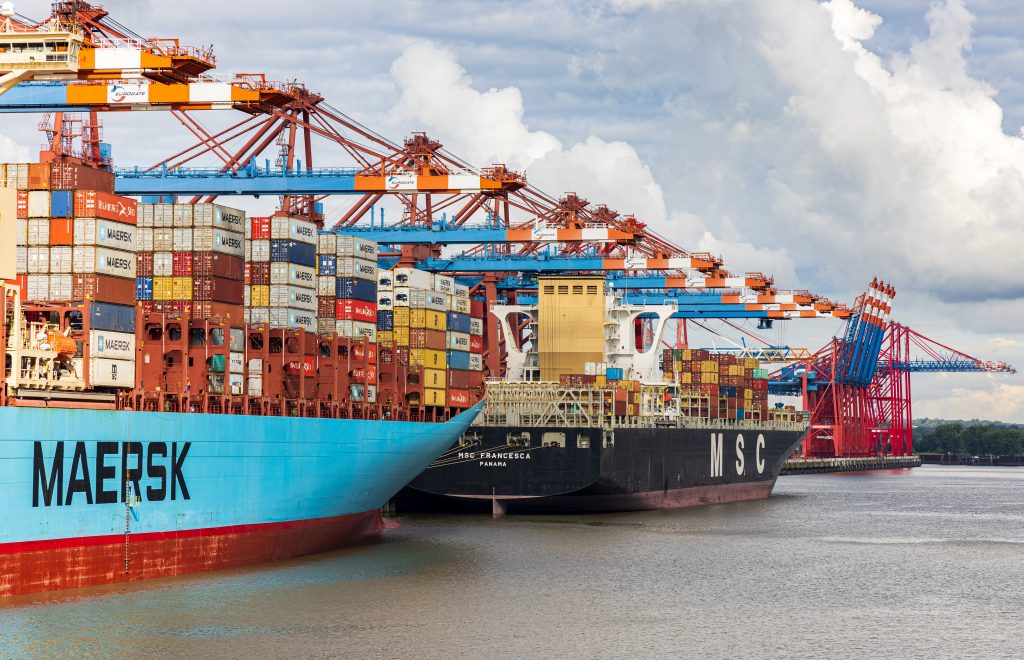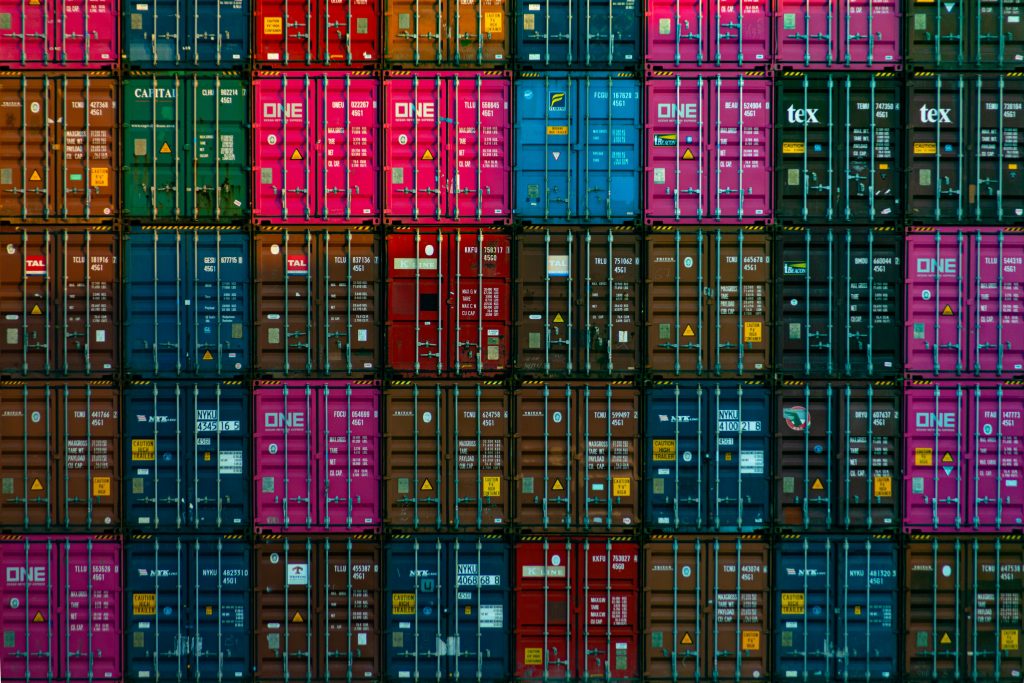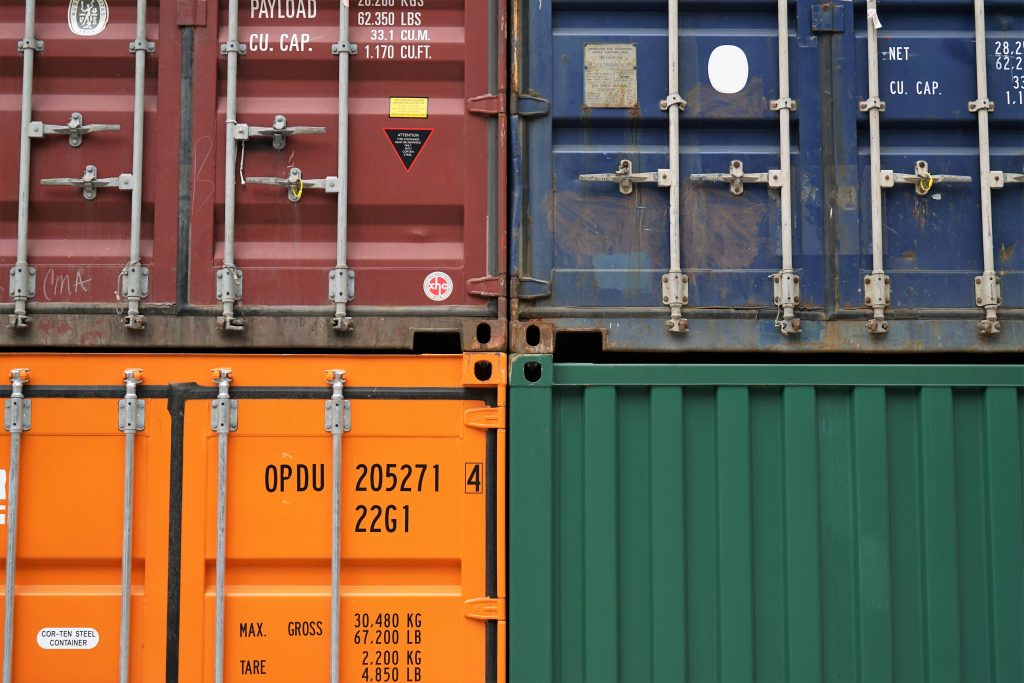Learn How Long It Takes To Make a Shipping Container and Why There is a Current Shortage
Just like you don’t think about how a box of frozen waffles found it’s way to your freezer, it’s probably unlikely that you’ve ever seriously considered how involved and intricate the process of making a shipping container can be (even if you work in the shipping industry!) The process shares many similarities with putting together that cardboard box of waffles, at a much larger scale. It takes teams of hundred of specialized assembly line workers (welders, painters, etc.) to build just one box. When considering the scale at which a shipping container factory operates it is no surprise that they, like virtually every industry over the past year, have dealt with numerous delays stemming from the COVID-19 pandemic.
What Pieces Are Required for a Shipping Container?

Maersk is one of the largest shipping container manufacturers in the world.
The shipping industry is a global industry, but like the Spice Road of old, all shipping roads eventually lead to China. Even Maersk, based in Denmark and one of the largest shipping container manufacturers in the world, has their production facilities located in China.
It starts with steel. Big rolls of the metal alloy are unrolled and cut into sheets (approx. 2-3 meters in length). These sheets are sandblasted, primed and run through a corrugation machine. Corrugation increases the strength of all types of material; picture a strong cardboard box compared to a flimsy sheet of paper.
The sheets are also made to use roof panels, floor braces, and wall panels. Now that we have all our formed pieces, it’s time to build some containers.
Some Assembly Required
The initial step of construction is to weld wall panels, square tubing for the tops of walls, and to create a floor frame assembly. This floor frame looks much like a very wide, long steel ladder and provides structure and strength for the rest of the build. Corner posts are added and welded to the floor frame. Smaller pieces of the corrugated steel are used to build the door frame, which is then attached to the corner posts and floor frame. This step of the process is nearly identical to the initial framing of a house, except instead of wood and nails, we’re welding steel. Roof panels are then added, and are quite flimsy by themselves until they are attached to the pre-existing framework of the container, as they lack corrugation.

Logos and other paint decorations are one of the final steps in the building process.
The container now looks more like a finished product than ever. It is put on temporary wheels and run through priming, painting, and touch up. Workers then add varnished wood flooring and attach it to the container with a combination of wood glue and heavy-duty screws.
Any exterior decoration is now added and door hardware is installed. The all-important waterproofing stage begins by outfitting the door with rubber seals and waterproofing the bottom of the box in a specialized tunnel.
There are a series of inspections and tests including a run through the “car wash” to make sure the box is watertight and can handle extreme elements. Thanks to the hard work of dozens of people, we have a Grade-A shipping container!
Reasons for Current Shortage of Shipping Containers

There are shipping containers available, they’re just not where they need to be around the world.
Believe it or not, the time it takes to complete all of the steps lined out above is roughly twelve hours (including watching the paint dry). The real question is how quickly does the shipping container become available after placing an order? Normally, lead times for delivery of a shipping container is six weeks, but during the pandemic the shipping industry has seen those lead times stretch out to nearly four months.
Even still, China is expected to produced 5.4 million TEUs (20-foot equivalent units) of steel boxes in 2021, so how can there possibly be a shortage? Simply put, the shipping containers that do exist are in the wrong place. The now infamous blockage in the Suez Canal in addition to shutdowns at Chinese ports due to Covid-19 have pushed already strained shipping lines to the brink. In fact, the “shortage” of shipping containers is a bit of a misnomer; the physical number of shipping containers in existence exceeds the requested capacity. However, the lack of available shipping containers in desired locations will remain, in some form, until ports can work through their congestion.
How Can SiShips Give You An Advantage
If you’re looking for a shipping partner to guide you through the confusing waters of international and domestic trade, SiShips is here to help. We combine our personal expertise with state of the art software to work through any and all delays across the globe. SiShips can work with you to find the most cost and time-efficient ways to transport your product wherever it needs to go.
To learn more about SiShips, or to view a demo of our software, contact us today.

